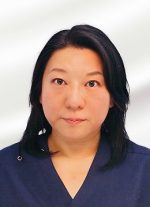1/ Workshop title
The K-Style Contact Needle Technique Session
1/ Presentation title
K-Style Contact Needle Technique in Palliative Care : Evidence-Based Non-Invasive Acupuncture for Symptom Relief in Oncology
Scheduled
Day 2, 9:00 / Day 2, 14:00
1/ Presentation summary
The K-Style Contact Needle Technique Session for palliative care embodies the Congress theme, “Acupuncture from past to future : cure, care, evidence, teaching and research,” by serving as a bridge between traditional and modern medicine.
The K-Style Contact Needle is a technique based on Meridian Therapy. It is rooted in the concept of treating the whole person rather than focusing on individual symptoms. The K-Style emphasizes the smooth flow of Qiand is characterized by a contact needling method, in which the needle lightly touches the skin without insertion.
The technique consists of nine approaches : two for root treatment (honchi-ho) and seven for branch treatment (hyochi-ho). Disposable gold or silver needles are used without penetrating the body. Instead, the needle is gently placed on acupuncture points and either tapped or rotated to regulate the flow of Qi. The practitioner uses the supporting hand (oshite) to sense the movement and arrival of Qi. This allows for precise control of Qito release stagnation in the meridians and internal organs, thereby restoring overall energetic balance.
Because this technique is non-invasive, it is highly safe, painless, and carries a low risk of infection. It is especially suitable for patients with reduced physical strength and for those receiving palliative care in hospital settings.
2/ Presentation summary
K-Style Contact Needle Technique in Palliative Care: Evidence-Based Non-Invasive Acupuncture for Oncology Symptom Relief The K-Style Contact Needle Technique, developed at Hiroshima University Hospital’s Kampo Medicine Center, is a modern, non-invasive adaptation of Japanese meridian therapy.
Using gold or silver needles, it gently stimulates acupuncture points on the skin without penetration. By promoting Qi flow and resolving stagnation, it helps restore energetic balance. Its safety and low burden makeit ideal for patients with limited physical strength, especially in palliative or cancer care.
Our team leads clinical acupuncture research in oncology. A randomized controlled trial (Ogawa-Ochiai, 2021)showed that weekly K-Style sessions improved cancer-related fatigue, emotional well-being, and quality of life, with no adverse events.
Patients found the treatment acceptable, and it integrated well into multidisciplinarycare settings. The technique is also effective in managing chemotherapy-induced peripheral neuropathy (CIPN).
A case series and observational study (Ogawa-Ochiai, 2013) reported reductions in numbness, pain, and tingling in patients receiving neurotoxic agents like paclitaxel and oxaliplatin. Participants experienced improved sleep and reduced reliance on medications.
This session will explain K-Style’s principles, feature a live demonstration, and present data from RCTs andreal-world cases. Attendees will learn how to apply this gentle, evidence-based method in clinical oncology and palliative care, merging traditional meridian therapy with modern integrative medicine.
Conflict of interest
No

k9153@hiroshima-u.co.jp
Hiroshima University Hospital
Kampo Clinical Center,
LAcMx